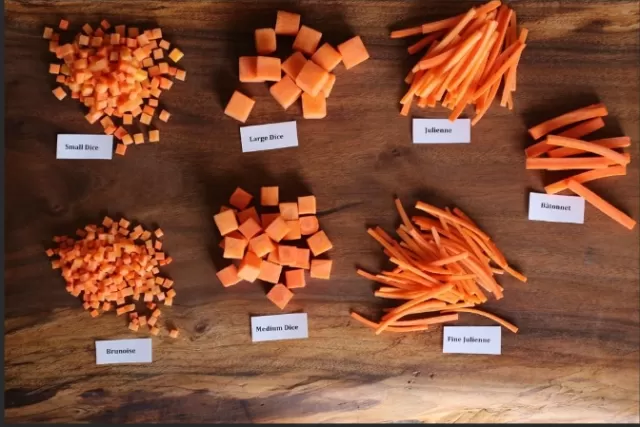Common Mistakes That Can Ruin Your Casserole. Casseroles are beloved for their comfort and convenience, but making them can sometimes lead to unexpected outcomes. To ensure your casseroles turn out perfectly, it’s essential to avoid common mistakes. Prevent issues like mushy vegetables, undercooked rice, or unevenly baked dishes with these helpful tips. From selecting the right baking dish to cutting ingredients to the correct size and thawing frozen ingredients properly, these insights will guide you toward flawlessly baked casseroles that delight your taste buds and those of your loved ones. Master the art of casserole making and savor every comforting bite.
Defining Casseroles: A Versatile Culinary Category

The term “casserole” refers not to a specific dish but rather to the cooking vessel itself.
Casserole recipes involve baking the ingredients in a single dish and serving the resulting dish family-style. Casseroles can encompass a wide range of dishes, from those rich in meat to vegetable-focused options.
These versatile creations include side dishes like the classic Thanksgiving green bean casserole, as well as main courses such as tuna noodle casserole or Shepherd’s pie.
Casseroles can even extend to sweet treats, with custard-based delights like baked French toast or bread pudding commonly prepared in casserole dishes.
One notable characteristic of casseroles is their convenience; they can often be made ahead of time and reheated, making them perfect for busy days and nights.
Embrace the diversity of casseroles, exploring the myriad possibilities within this culinary category.
Selecting the Right Baking Dish for Casseroles
To set the stage for a successful casserole, it’s crucial to choose the appropriate baking dish.
Start by considering the size specified in the recipe; whether it mentions specific measurements like a 9-by-13-inch rectangle or indicates a specific quart capacity, adhering to these guidelines ensures the ideal balance of ingredients in the dish.
Moreover, the depth of the baking dish plays a role.
A shallower dish offers more surface area, potentially leading to quicker evaporation and a drier casserole. Conversely, a deeper dish retains moisture better.
Ensuring the proper size and depth prevents dryness or overflow issues during baking.
Opt for ovenproof materials such as ceramic, glass, or cast iron when selecting your casserole dish.
It’s advisable to avoid vintage or reactive materials like untreated cast iron for dishes containing high-acid content, as they might impart unwanted flavors. Enameled cast-iron dishes are suitable for acidic foods, providing a safe alternative.
Lastly, considering dishwasher-safe options can ease post-cooking cleanup, sparing you the hassle of hand-washing a casserole dish.
By being mindful of these aspects, you’ll set the stage for a well-prepared and hassle-free casserole experience.
Precision in Ingredient Size for Casseroles

Achieving a delightful eating experience with casseroles involves careful consideration of ingredient size.
Since casseroles are typically served by spooning into bowls, prioritizing comfort and flavor over aesthetics is key.
For meats incorporated into the casserole, ensure they are chopped into bite-size pieces for easy consumption.
This applies to various meat types, including those in ground or sausage form; breaking them into smaller, manageable pieces enhances the overall dining experience.
Consistency in chopping potatoes and vegetables into uniform pieces is essential.
This uniformity promotes even cooking, preventing the occurrence of overly soft, overcooked vegetables or unpleasantly undercooked starches. By maintaining a thoughtful approach to ingredient size, you create a casserole that delivers a harmonious blend of flavors and textures in every forkful.
Managing Frozen Ingredients in Casseroles
Frozen vegetables are convenient additions to casseroles, offering prepped ingredients with retained flavor and nutrients.
However, their high moisture content can affect the casserole’s texture if not handled correctly. To optimize their use:.
Thaw and Drain: Thaw frozen vegetables before incorporating them into the recipe.
Once thawed, drain excess water thoroughly to prevent the release of moisture into the casserole during baking.
Cook from Frozen: Alternatively, cook the frozen vegetables directly from their frozen state until they thaw and most of the liquid evaporates.
This method helps reduce the moisture content before adding them to the casserole.
Neglecting to address the excess moisture from frozen vegetables can lead to a soggy texture in the finished casserole.
By prepping these ingredients appropriately, you’ll maintain the desired consistency and ensure a well-balanced, flavorful dish.
Casseroles: A Culinary Canvas for Creativity

The term “casserole” transcends a specific dish, instead embracing a cooking style centered around a communal serving dish.
This versatile culinary category spans a spectrum of creations, from hearty meat-based dishes to veggie-forward alternatives.
Casseroles can take on various roles, serving as side dishes like the iconic Thanksgiving green bean casserole or stepping into the spotlight as main courses, exemplified by classics like tuna noodle casserole or Shepherd’s pie.
Beyond savory offerings, sweet treats like baked French toast and bread pudding find a home in the world of casseroles, often prepared in the same family-style dishes.
One of the hallmark features of casseroles is their practicality, allowing for preparation in advance and easy reheating.
Embrace the diversity of casseroles, unlocking a world of culinary possibilities within this adaptable and convenient cooking style.
*The information is for reference only.